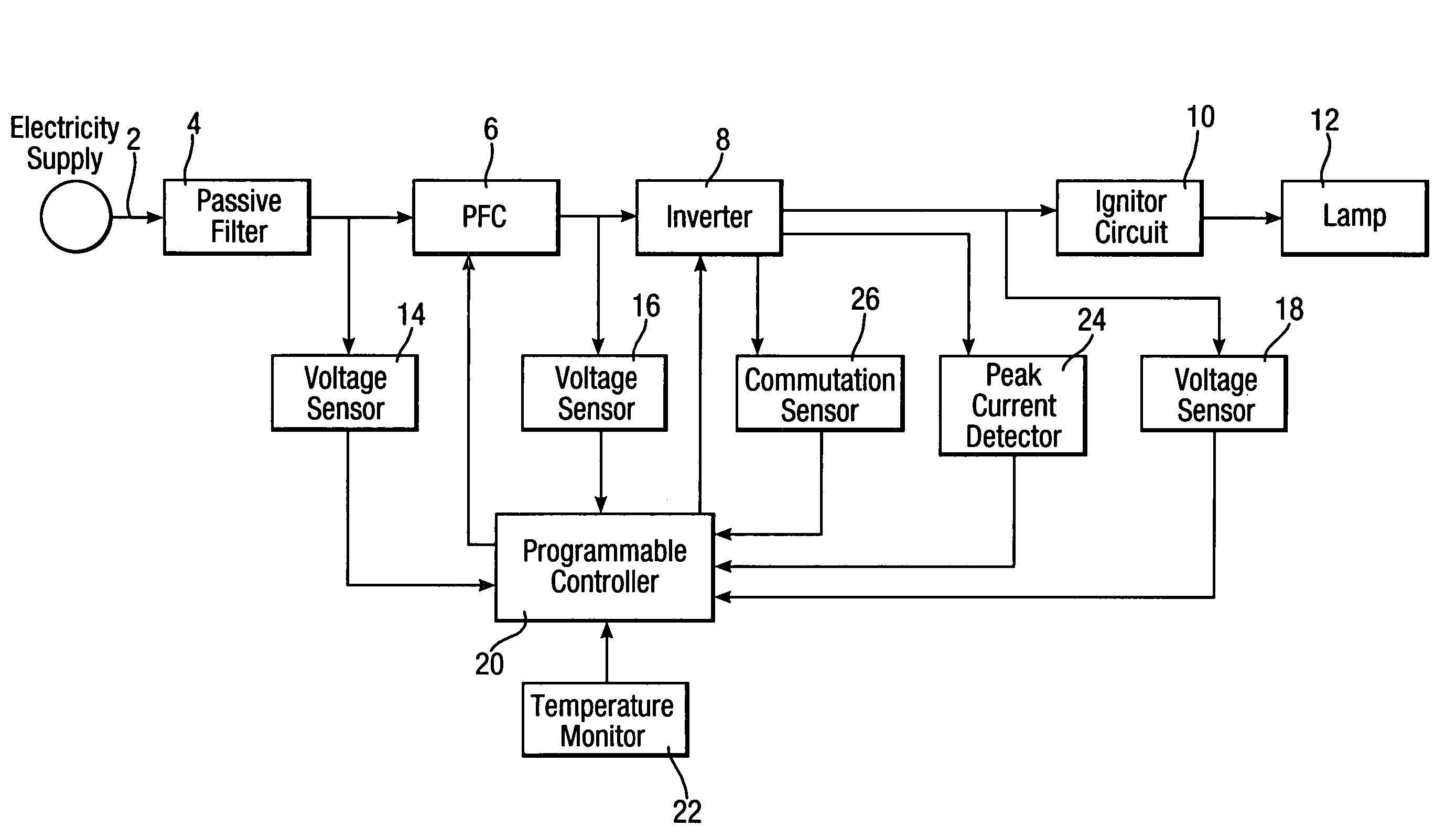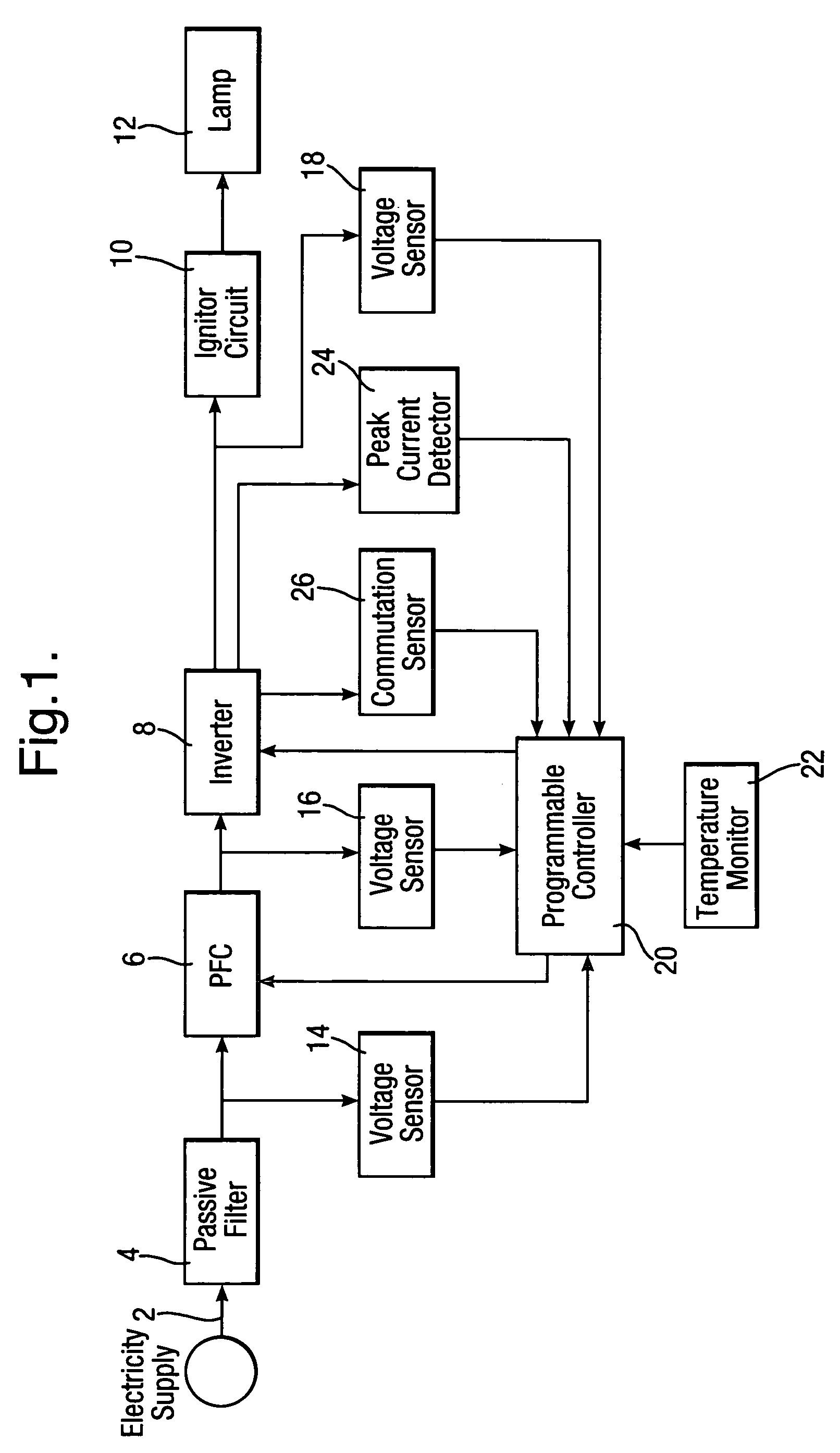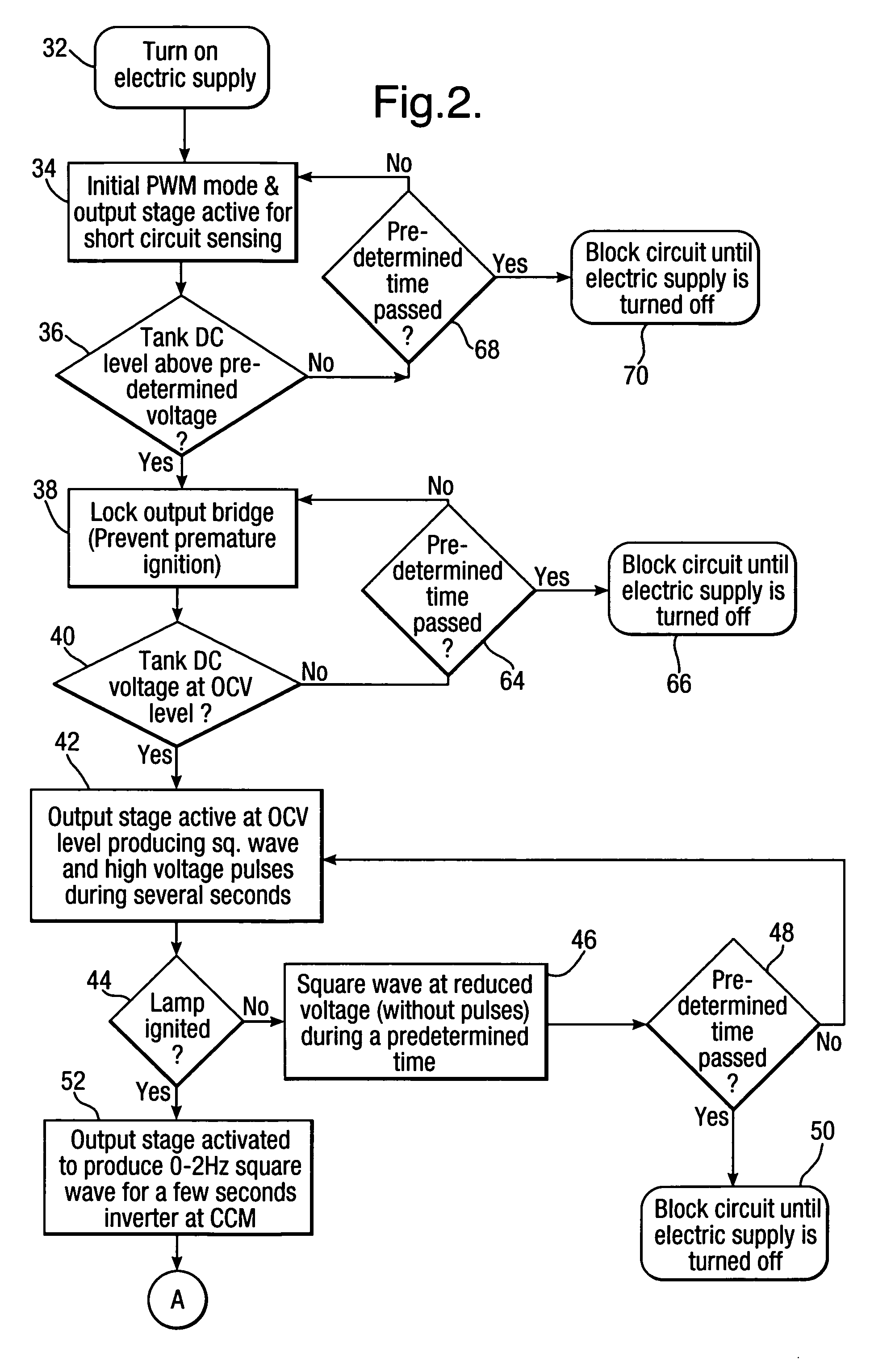Process for operating a discharge lamp
a discharge lamp and process technology, applied in process and machine control, electric variable regulation, instruments, etc., can solve problems such as unnecessary losses in the circuit, and achieve the effect of improving the ballast functioning
- Summary
- Abstract
- Description
- Claims
- Application Information
AI Technical Summary
Benefits of technology
Problems solved by technology
Method used
Image
Examples
Embodiment Construction
[0022]In FIG. 1 there is illustrated a block diagram of an embodiment of a programmable ballast for the implementation of the present invention. The electrical energy flows from an electricity supply via line 2 through a passive filter 4, a PFC stage 6, an inverter 8 and an ignitor circuit 10 into an HID lamp 12. Three voltage sensors 14, 16 and 18 are provided that sense the PFC input voltage, its output voltage and the lamp voltage, respectively, and deliver the respective voltage data to a programmable controller 20. Also provided is a temperature monitor 22 that delivers to the controller 20 data relating to the circuit temperature, thereby enabling the controller 20 to prevent excessive temperatures in the ballast, by reducing the power delivered through the circuit to the lamp 12. Lamp current is sensed and monitored through a peak-current-detector 24 provided in the inverter 8. Also seen is a commutation sensor 26.
[0023]FIG. 2 illustrates a flow diagram of a preferred embodim...
PUM
 Login to View More
Login to View More Abstract
Description
Claims
Application Information
 Login to View More
Login to View More - R&D
- Intellectual Property
- Life Sciences
- Materials
- Tech Scout
- Unparalleled Data Quality
- Higher Quality Content
- 60% Fewer Hallucinations
Browse by: Latest US Patents, China's latest patents, Technical Efficacy Thesaurus, Application Domain, Technology Topic, Popular Technical Reports.
© 2025 PatSnap. All rights reserved.Legal|Privacy policy|Modern Slavery Act Transparency Statement|Sitemap|About US| Contact US: help@patsnap.com



